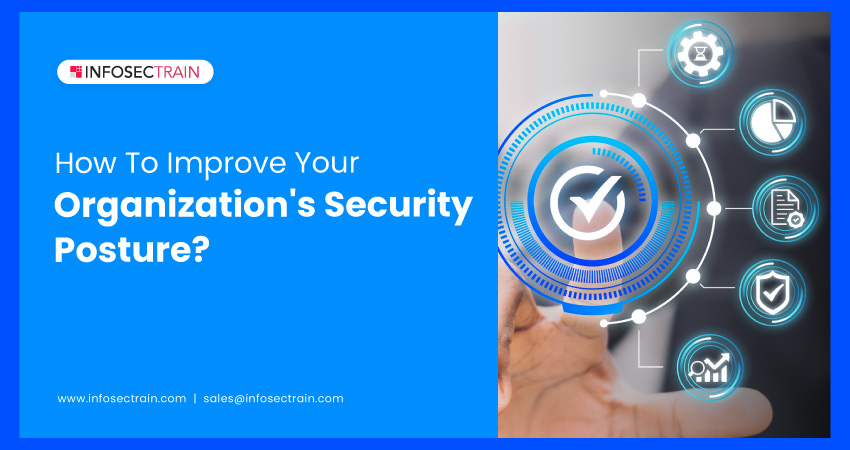How To Improve Your Organization’s Security Posture?
Hackers are significantly targeting the organizations that are least secure and protected, thus leading to a rise in cyber attacks in today’s online world. Many companies must implement robust cyber security best practices in their organizations to improve the overall security posture, which includes the ability to defend against cyber attacks.

Where there is a weak security posture, a hacker would be easily able to exploit your data and network. So, what exactly a security posture is, and how to improve the organization’s security posture? Let’s discuss this in detail.
Table of Contents
What is a security posture?
How to assess the organization’s security posture?
How to improve an organization’s security posture?
Security posture assessment
What is a security posture?
Security posture is a holistic picture of an organization’s security strength covering key areas such as network security, data security, malware prevention, incident management, privilege management, internet security, and security awareness among employees.
These key areas cover all the necessary security requirements to defend against cybersecurity threats. The organization’s security posture is not static; it can be modified and updated with the latest security requirements.
How to assess the organization’s security posture?
Assessing the organization’s security posture begins with analyzing a few questions like ‘What went wrong?’, ‘What are the risks associated with the organization?’, and ‘Where the attack surfaces are created?’. These questions drive a way to strengthen the security posture and prevent cybersecurity risks.
In general terms, the ability of the security posture is directly proportional to the amount of risk the organization has to experience. Many tools and methods assess the organization’s security posture to help businesses protect their confidential assets.
How to improve an organization’s security posture?
1. An inventory audit:
The initial step for creating a good security posture is to determine the level of risks. A complete list of all assets is used for the audit to identify the key risks that affect the organization. Through the inventory audit, organizations can identify the technologies that are used without the approval of IT teams or management.
2. Conduct a cybersecurity risk assessment:
A cybersecurity risk assessment identifies the level of vulnerability in various assets in the organization. The risk assessment results determine the upcoming action required to be taken to improve the security posture to protect the organization from future cyber threats. The organization should evaluate the organization’s third-party vendors to identify and spot the vulnerabilities in the system.
3. Prioritize the risks:
After identifying all the vulnerabilities, the organization should prioritize the risks based on the impact they will have on the organization. Prioritizing the risks helps to plan accordingly to patch and remediate the vulnerabilities to prevent the organization’s assets from threats.
4. Track the security metrics:
Security metrics enable organizations to measure the effectiveness of the implemented security practices. The significance of security metrics might vary based on the maturity level of the organization’s security posture. It helps to identify the possible ways to mitigate risks in the future. The security metrics align with the organization’s security goals and identify, monitor, and report Key Performance Indicators (KPIs).
5. Automate threat management:
Automation technology helps organizations automate the process of cyber threat detection and mitigation. It helps monitor the network and provides identified risk details to the IT teams in a timely manner. Thus, security professionals emphasize high-risk threats and create a more proactive and enhanced security posture. It also includes developing security practices for software and applications to help organizations in preventing threats.
6. Develop an incident response plan:
In the case of a security breach, a prior incident response plan helps to determine the appropriate responses, procedures, and roles. It provides a timely checklist of prioritized actions during the attack. The incident response plan might vary depending on the severity of the attack that affects the organization. Once the incident response plan is defined, conduct a mock attack to ensure that each role is placed and executed effectively.
7. Consider cybersecurity training:
Behind every basic cyber attack, there is an essence of human error that causes a massive impact on the organization. It is essential to spread awareness about different types of attacks that impact the organization potentially. Also, spread awareness on the latest security best practices to mitigate human errors and prevent organizations from cyber attacks. Every organization should schedule a time for a security awareness program to empower all employees to understand cybersecurity’s importance and understand best practices to mitigate vulnerabilities.
Security posture assessment
The security posture assessment helps organizations to design and enhance their cybersecurity roadmap. It provides a holistic view of internal and external security posture by including all the security practices. The security assessment helps to assess and improve the security posture in the following:
- Identifying and maintaining the value of data
- Recommending a robust action plan to reduce the risk and enhance the security defense mechanism
- Defining the risk and threats associated with confidential data
- Evaluating the security measures
Become a CISO with InfosecTrain
Security is the primary concern for every organization. A Chief Information Security Officer (CISO) plays a crucial role in maintaining adequate security strategies, policies, and plans. InfosecTrain has tremendous aspirants who got trained and benefitted from the Certified Chief Information Security Officer (CCISO) online certification training program. To enhance your career to a high-level position, check out our expert-designed course and get trained to crack the certification exam.







 1800-843-7890 (India)
1800-843-7890 (India)